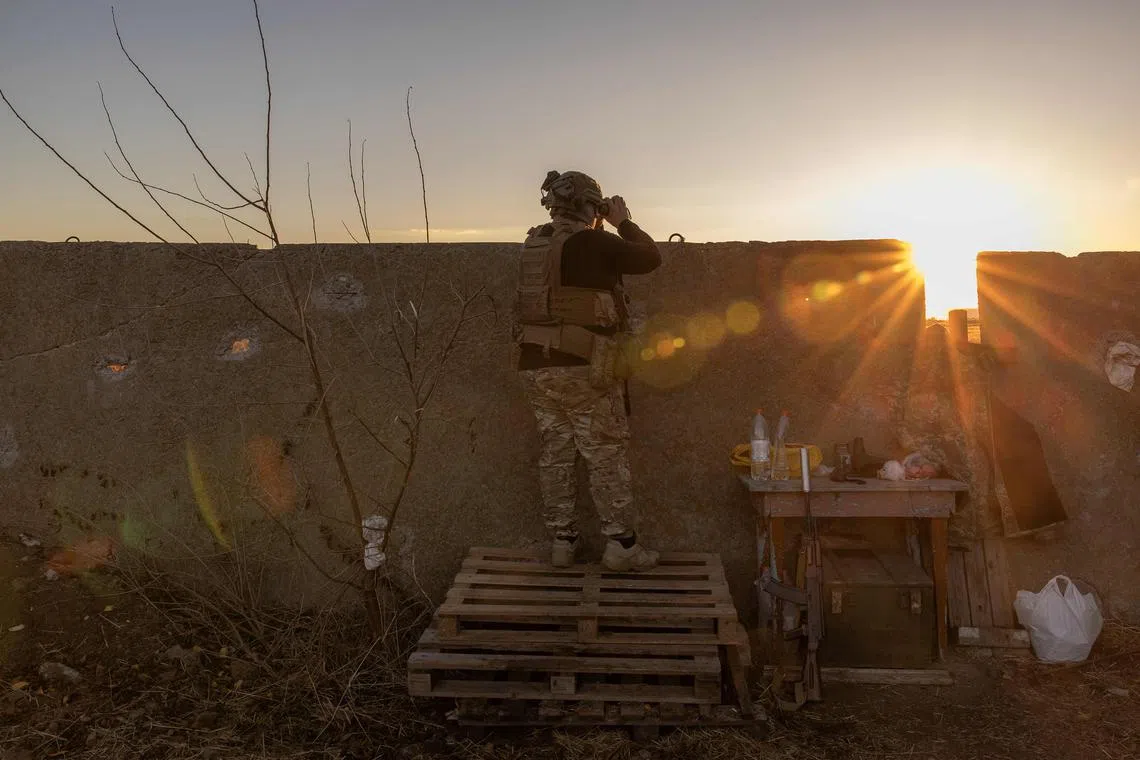Ukraine says it has pushed Russians up to 8km away from Dnipro river
Sign up now: Get ST's newsletters delivered to your inbox

A Ukrainian soldier watches an area of the Dnipro river from an undisclosed location on Nov 6.
PHOTO: AFP
Follow topic:
KYIV – The Ukrainian army has pushed Russian forces back “3km to 8km” from the banks of the Dnipro river that, if confirmed, may be the first meaningful advance by Kyiv’s forces months into a disappointing counteroffensive.
“Preliminary figures vary from three to eight kilometres, depending on the specifics, geography and landscape design of the left bank,” army spokeswoman Natalia Gumenyuk told Ukrainian television on Nov 19.
She did not specify whether Ukraine’s military had complete control of the area or if the Russians had retreated.
“The enemy still continues artillery fire on the right bank,” she said, estimating that “several tens of thousands” of Russian troops are in the area.
“We have a lot of work to do,” she added.
Ukrainian and Russian forces have been entrenched on opposite sides of the vast waterway in the southern Kherson region for more than a year, after Russia withdrew its troops from the western bank in November 2022.
Ukrainian forces have staged multiple attempts to cross and hold positions on the Russian-controlled side, with officials in Kyiv finally reporting a “successful” breakthrough last week.
It comes after Kyiv’s much-awaited counter-offensive launched in June has largely fizzled, with Ukraine retaking just a handful of villages in the south and east.
The last significant success claimed by Kyiv was the retaking in August of the village of Robotyne
Ukrainian forces were not able to further pierce Russia’s defensive lines.
A bridgehead on the left bank of the Dnipro would allow a deeper offensive in the south, though it would require deploying more men and armour in the difficult-to-reach marshy region. AFP

